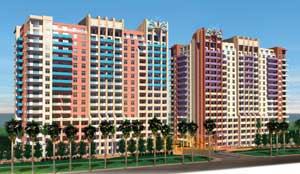Cost-Cutting Techniques While it is not uncommon to have 15 to 20 unit types in a single building, it’s imperative that plumbing risers stack in order to reduce the cost. Also, it is desirable to standardize kitchen and bath layouts to simplify the buyout process and make accessibility compliance easier to control.
To achieve efficiency, create unit plans with plumbing stacks in common runs. This minimizes chase and soffit areas needed to integrate and hide the systems. For cost effectiveness, install a split HVAC system for each residence versus a more costly central mechanical plant.
Save by using the same residential subcontractors who work on medium-density multifamily projects for the non-structural and non-exterior skin items – interior framing, electrical, mechanical, plumbing, drywall, and finishes. They are familiar with the requirements and can bid the jobs accurately and quickly. At Ballpark Place, switching from commercial to multifamily subcontractors reduced bid prices by more than $2 million.
On any high-rise tower, the design and resulting construction methods must coordinate into a production line process known as the daily cycle. Each day, each sub trade must complete approximately 4,000 square feet of floor area and exterior (closure) construction. Decisions on exterior skin construction need to consider construction sequencing.
In the best scenario, the structure should be topping out above while a completed sales model is open on a lower floor – general construction is occurring in between. This can significantly decrease financing costs.
Exterior façade materials and closure wall composition may evolve significantly during a project. The architectural design must be capable of accommodating these changes and still result in a façade worthy of a landmark structure.
